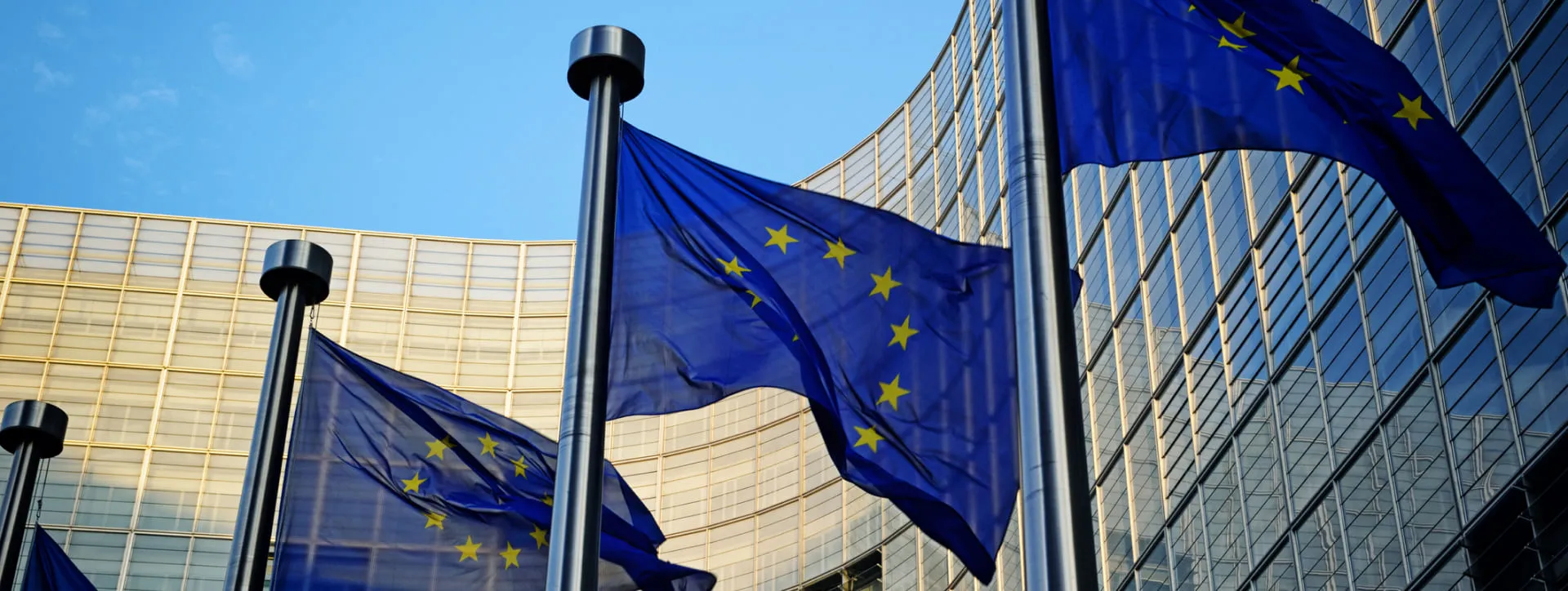By Axel Strauss
Date: 04/15/2025
Europe may be the second-smallest continent on planet Earth. However, with roughly 50 nations and over 750 million people spread across just 10 million square kilometers, it’s also the world’s third most populous. As a tourist destination, meanwhile, the continent is number one by far — welcoming an average of over 500 million international visitors each year (i.e., nearly half of all global travel). And that includes the UK (which remains one of the continent’s busiest travel hubs — despite its somewhat recent European Union exit).
Europe also consistently ranks as the planet’s safest continent for travelers. However, with so much to see and do — you can never really be too careful. So if you too are planning an upcoming European adventure, AXA has compiled the comprehensive safety guide below. It should give you a better understanding of what to look out for — along with some key safety tips — and ensure that your upcoming European journey is a smooth one from start to finish. And that’s no matter where in Europe you’re headed!
- Is Europe safe for tourists?
- What areas should be avoided in Europe?
- What are the most common crimes in Europe?
- What are the health risks when traveling in Europe?
- What natural disasters affect Europe?
- How safe is Europe to get around?
- 5 Safety tips when visiting Europe
- What documentation do I need to visit Europe?
- How can AXA Travel insurance help make your European trip safer?
Is Europe safe for tourists?
Yes. In fact, according to the Global Peace Index 2024, Europe remains the most peaceful region globally — with eight of the world’s ten most peaceful countries within its borders.
But Europe’s borders are also shared by roughly 50 different nations. 44 of them are considered sovereign states by the United Nations, 27 of them in the European Union, most are Schengen countries, but many are non-Schengen countries, and so on. So, naturally, the actual level of safety in Europe varies greatly from border to border, city to city, and town to town.
Iceland, for example — a member of the Schengen but not the EU — consistently ranks as literally the safest place on Earth, according to the GPI. And countries like Austria, Denmark, Ireland, Norway, and Switzerland tend to follow close behind.
Meanwhile, top tourist destinations like France, Italy, Germany, Greece, Portugal, and Spain all remain relatively safe and peaceful too.
On the other hand, since Russia’s 2022 invasion of Ukraine, both countries — located within Europe’s eastern borders — have obviously seen a decline in their GPI and overall safety levels. As have many of their Eastern European neighbors — such as Belarus, Hungary, Moldova, Poland, Romania, and Slovakia.
Ukraine’s neighbor to the south, Türkiye (formerly Turkey), meanwhile, ranked lowest of all European nations in the 2024 GPI.
So, in short — while safety levels are generally tourist-friendly across the European continent, it’s important to both be prepared and stay diligent (especially if you’re heading east).
PRO-TIP: AXA can help you understand the geographical (and other) differences between Europe, the EU, the Schengen Zone, the Euro Zone, and the EEA too!
What areas should be avoided in Europe?
Some areas near borders or within major cities may be riskier than others. As mentioned above, border regions especially in Eastern Europe can experience occasional tensions, for instance.
Tourists should also be cautious in certain districts within cities with higher crime rates — such as parts of Barcelona, Paris, and Rome (and especially after dark).
PRO-TIP: AXA can also tell you more about the most dangerous cities in Europe and how to stay safe when visiting them.
What are the most common crimes in Europe?
The most common crimes targeting tourists in Europe are consistently pickpocketing, petty theft, and various scams (both on the street and screen — i.e., online).
And major tourist cities like Barcelona, Paris, Rome, and Prague are hotspots, with criminals often operating in crowded areas like airports, train stations, and popular landmarks.
So, again, staying alert and securing your belongings can minimize these risks. As can staying up-to-date with the latest news and statistics.
PRO-TIP: The European Commission’s official “Eurostat” page provides detailed, up-to-date statistics concerning crime throughout the EU (and, thankfully, it shows that overall crime has generally decreased since 2010).
Is Europe at risk of terrorism?
Terrorism also remains a concern in Europe, with sporadic incidents occurring in major cities from time to time. And this, unfortunately, affects mostly Western Europe.
Europol — the EU’s official law enforcement agency — provides an annual EU Terrorism Situation and Trend Report (aka EU TE-SAT), where you can see the latest trends (by country and year). And it explains that “with the purpose of informing policymakers, law enforcement, and the wider public, the EU TE-SAT aims at protecting public safety and advancing regional stability, allowing the EU to continue responding to terrorism in an efficient manner and making Europe safer.”
Meanwhile, both the European Parliament and local and international authorities work diligently to pursue culprits and mitigate risks. Still, the threat does persist in some urban areas.
Travelers are, therefore, advised to stay informed about the latest local news — and to always follow official security guidelines and regulations.
How can I protect my belongings while traveling in Europe?
The surest way to protect your belongings is to be as prepared as possible before your trip — and to stay diligent throughout it. To do that, you should:
- Study the areas you plan to visit and note potential risks;
- Avoid carrying large sums of cash;
- Consider using anti-theft bags, money belts, crossbody bags with zippers, and/or fanny packs for valuables;
- Keep important documents in a secure place;
- Make extra copies of the important stuff (passports, tickets, etc.);
- Always lock up your luggage (and other valuables) when leaving it unattended (use hotel safes, reputable luggage storage centers, etc.):
- Be aware of your surroundings — especially in crowded places;
- Have your phone handy (and charged) in case you need to make an emergency call.
PRO-TIP: Another sure way to protect your belongings — in case something does go wrong — is, of course, with some top-quality Schengen travel insurance. But more on that below!
What should I do to avoid scams targeting tourists?
Scams in the digital age are, unfortunately, a dime a dozen. And they’re as diverse and far-reaching as the internet itself — with scammers especially targeting those not familiar with the general lay of the land.
In Europe, they range from overpriced taxis and restaurant bills to fake charities, sketchy rentals, copycat ATMs, and everything in between.
The best defense? Be prepared, verify everything, and trust your gut. Namely:
- Do your research before traveling;
- Use reputable sites for bookings and the like (as well as the general feedback of the internet — which can be quite helpful in Europe);
- Avoid unsolicited offers, and be wary of anyone asking for money.
- Never pay for anything you don’t see firsthand;
- Always ask for official documents, and cross-check details with legitimate sources.
- And never share sensitive personal info with anyone (or anything) that seems off.
PRO-TIP: Europol also provides a series of comprehensive EU Public Awareness and Prevention Guides, which has the latest info on common European scams (both for EU citizens and anyone visiting).
How can I stay safe during political demonstrations or protests in Europe?
Demonstrations, protests, and strikes reflect the political climate of any nation — including those in Europe. That is, they are not uncommon — and while most are peaceful, they can sometimes turn violent.
The best way to stay safe is, again, to stay informed — through local news, government alerts, and social media. If in doubt, avoid areas where you know demonstrations are taking place. And — no matter what — always follow the advice of local authorities.
What are the health risks when traveling in Europe?
The most common health risks for travelers in Europe include foodborne illnesses, insect bites, and seasonal flu.
Fortunately, the overall healthcare system is excellent. Moreover, cases of serious health injuries are rare. That said, travelers should still take a few precautions.
For example, tick-borne illnesses* such as Lyme disease (aka Borreliosis) and tick-borne encephalitis (TBE) can pose a risk — especially in parts of Central and Eastern Europe, forested areas in countries like Austria, the Baltics, the Czech Republic, and Germany (and especially in spring and summer).
So wearing long sleeves, using insect repellent, and sticking to marked trails can help. As well as checking for bites/ticks, of course.
*PRO-TIP: For official advice, the European Centre for Disease Prevention (aka ECDC) has more on both Lyme disease and TBE.
Elsewhere, common travel hiccups like stomach bugs from unfamiliar foods (and occasionally unclean water) can still catch travelers off guard too.
Meanwhile, heat stroke in summer months is not uncommon either — particularly in parts of Southern Europe prone to heatwaves in recent years (such as Greece, Spain, Italy, Portugal, and the South of France, for example).
And, finally — the seasonal flu is kind of a universal thing. But still, keep in mind that a lot of Europe still tends to get cold in the wintertime too (and often rainy, snowy, haily, windy, etc.). Especially so in the north, of course. Like, really cold.
So, again, do your research. Dress (and pack) accordingly, and prep a basic medical kit before your travels. And during your travels — have your phone (and medical kit) handy, wash your hands, stay hydrated, and trust your instincts.
What vaccinations are required in Europe?
As far as vaccines go, there is no one specific requirement for the continent as of early 2025. However, depending on where exactly you’re going, you might want (or need) to update your vaccines for:
- tetanus
- diphtheria
- whooping cough
- measles
- meningococcal
- mumps
- influenza
- rubella (MMR)
- and pneumonia
You also might want to get that seasonal flu shot before traveling in the colder months.
For Eastern Europe, meanwhile, organizations like the U.S. Center for Disease Control and Prevention (CDC) and the World Health Organization (WHO) also recommend vaccinations for:
- hepatitis A
- hepatitis B
- typhoid
- rabies
What about COVID-19?
And as far as the somewhat recent pandemic goes — all travel restrictions (including required vaccinations) have been lifted in the EU since 2023. So that one is up to you.
PRO-TIP: But either way, make sure to double-check with the specific embassy and/or official website of your destination country to have all the latest info.
What natural disasters is Europe prone to?
Fortunately, Europe also remains mother nature’s safest continent too. However, depending on the region, it can be susceptible to extreme weather events like heat waves, storms, and wildfires (particularly in Southern Europe).
- Some countries are also prone to earthquakes — such as Italy, Greece, and Portugal.
- Volcanic eruptions — particularly in Iceland and Italy — may also pose a risk.
- Meanwhile, landslides can occur in mountainous areas after heavy rain — as well as flooding in both cities and rural areas.
So dress appropriately, stay hydrated, have a medical kit, and stay in the know with weather warnings and updates.
PRO-TIPS:
- The EU’s official European Severe Weather Database is a great general resource to help you stay in the know (and plan how much clothes to pack and/or sunscreen and water to bring).
- You can also consult the UN’s and the European Commission’s official Global Disaster Alert and Coordination System for some added peace of mind.
What are some risky outdoor activities in Europe?
Skiing, rock-climbing, hiking, cliff jumping, surfing — you name it, Europe’s got it. And all these, of course, come with their own level of risk too.
Accidents involving avalanches, falls, and drownings can occur — especially in areas like the Alps, remote coastal locations, and so on.
So the more adventurous travelers should always follow safety guidelines, use proper equipment, and hire professional guides where appropriate.
How safe is Europe to get around?
If you, however, prefer more traditional ways of getting from point A to point B — then Europe has plenty of options near, far, high, and low too. Buses, shuttles, ferries, trains, metro, planes, Uber, Bolt, e-scooters* — you name it. So here are some of the most common ones (along with safety levels).
Is it safe to drive in Europe?
For the most part, yes. But it again depends on where you’re going.
Each country has its own unique rules of the road and driving conditions — not to mention driving style.
For example, according to the International Drivers Association, recent Schengen members Romania and Bulgaria are the most dangerous to drive in.
And both roads and drivers in Western countries like Greece and Portugal can be tricky too.
Nations like Malta, the Netherlands, and Switzerland, on the other hand, consistently rank as the safest for four wheels.
*HEADS-UP: And with the booming popularity of e-scooters, segways, e-bikes, and so on, major tourist cities like Barcelona and Paris have seen significant increases in road accidents too. So be careful, learn the lay of the land before getting behind the wheel, and stay diligent!
Is public transportation safe in Europe?
Public transportation in Europe, however, is typically both safe and efficient across the board.
Major cities boast extensive metro, tram, and bus networks. However, pickpockets are known to operate on crowded trains — especially in major transit hubs like Barcelona, Paris, and Rome.
And, of course — the more isolated the region, the less public transport there is.
So do your homework, check both Google Maps and official local transportation websites, keep your belongings secure, and be cautious when boarding and disembarking.
What is the best and safest way to get around in Europe?
The safest and most efficient way to get around Europe also depends on the location.
- In urban areas: public transportation is highly recommended — both for its convenience and safety.
- For long-distance travel: trains are a great eco-friendly option — offering comfort, reliability, and often mind-blowing speeds and accessibility too.
PRO-TIP: Eurail is a great way to see literally most of the continent in one go, for example.
- When traveling between European countries — low-cost airlines usually prove to be your fastest option (and often the most bang for your buck too). But buses for short distances are a European local favorite as well.
If you do opt for an old-fashioned road trip though, car rentals, camper vans, glamping, and ride-sharing services are all widespread, common options as well.
Just keep in mind that — again — the road may differ drastically from town to town.
5 Safety tips when visiting Europe
And on that note, here are AXA’s 5 essential safety tips for no matter where in Europe you are:
Tip 1: Know Your Emergency Numbers
Dial 112 anywhere in Europe for emergency assistance.
But try to familiarize yourself with (and save) any extra emergency phone numbers in your specific destination country as well.
Tip 2: Stay Informed
Follow the latest news, laws, regulations, and other developments.
And explore the websites above — as well as those of the specific countries — for more detailed know-how.
Tip 3: Do Some Cultural Homework
It’s safe to say that no one really wants to be that tourist. So familiarize yourself with local customs, behaviors, and traditions — such as tipping, closing times, quiet hours, and so on. And, of course, some very basic linguistics can go a very long way too (i.e., — “please,” “excuse me,” “thank you,” and, of course, the often more powerful “no thank you”).
Tip 4: Try to Blend In
This one may be obvious, but not acting like that tourist greatly increases your overall level of safety anywhere — and especially in a place as diverse as Europe.
Of course, that’s usually easier said than done, so refer to Tip 3 — and, if you can, a local friend or relative or two.
Tip 5: Get Travel Insurance
And, finally, one of the most tried-and-tested ways to prevent any mishaps and stay safe throughout your Eurotrip? Well, insurance, of course.
Because no matter where in the world you are — it’s always better to be safe than sorry. And AXA, of course, got your back here too (i.e., see below).
What are the hidden dangers tourists often overlook in Europe?
Aside from general health and safety issues, there are some not-so-usual risks to keep in mind too — and these can be as diverse as the continent itself.
- Binge drinking is a common one for party-prone tourists, for instance — most prevalent in Northern and Eastern Europe (sometimes referred to as “the Vodka Belt”).
Meanwhile, “the Wine Belt” — i.e., France, Italy, Portugal, and the Mediterranean — also has its fair share of a good time gone wrong. - There are dangerous trends like “balconing”— i.e., the act of jumping from a balcony into a swimming pool.
This has been booming in recent years in places like the Balearic Islands and Spain — and often with dire consequences. - Anger against tourists: due to housing, employment, and other economic difficulties for the locals, there has also been a rise in activism against “overtourism” — especially in cities like Barcelona, Marseille (France), and Rome.
Protests of "fed-up" locals have also taken place on Greek islands that are very (too?) popular with tourists, such as Santorini, Paros, and Mykonos. - Mobility Hazards: as mentioned before, the ever-increasing traffic of international visitors has also led to drastic increases in accidents involving e-scooters, e-bikes, and the like in major cities.
PRO-TIP FOR VISITORS: In other words, when visiting any new place — try to do as much research as possible regarding the specific dangers involved beforehand.
And — once there — be respectful, courteous, and diligent, and obey both local laws and customs.
What documentation do I need to visit Europe?
Well, again — that depends on where exactly you’re going. At the very least, however, you’ll need your itinerary/tickets and a valid passport (or appropriate ID card).
For the majority of Europe — which is the Schengen Zone — you’ll likely also need a Schengen visa. And that entails some extra paperwork too.
PRO-TIPS: Fortunately, AXA can tell you who needs a Schengen visa — as well as all the Schengen visa requirements — in no time!
If you’re visiting the U.K. — which is no longer in the EU but still in Europe — you can check with their official government website whether you’ll need a visa.
Meanwhile, AXA can tell you all about the U.K.’s new travel requirement known as ETA as well!
PRO-REMINDER: And for a full list of paperwork, you should always double-check everything with your destination country’s (or countries’) embassies, consulates, and/or official government websites too.
Should I get travel insurance before visiting Europe?
Yes, travel insurance is highly recommended when visiting any part of Europe.
And that goes for whether you’re a European citizen or a traveler from outside the EU — and whether you need a visa or not.
After all, the proper travel insurance can cover medical emergencies, trip cancellations, lost belongings, and much more. It is therefore the number one way to ensure you stay safe throughout your European travels.
Moreover, for non-EU nationals, proper travel insurance may be mandatory in most European countries — as it is an obligatory requirement for being granted a Schengen visa.
But, again — visa or no visa — travel insurance is always a good call. Because, ultimately, even though Europe is quite safe — all the statistics and safety specifics above are definitely something to think about.
How can AXA Travel insurance help make your European trip safer?
And that’s exactly where AXA comes in. As the leading provider of travel insurance in Europe, AXA plans are trusted and affordable.
Moreover, an AXA plan can be purchased online in a matter of minutes!
If you do need that Schengen visa, AXA’s plans meet all the necessary requirements. And the AXA certificate — which can be downloaded and printed instantly — is accepted by all Schengen embassies, consulates, and visa application centers.
PRO-TIP: Oh, and if your visa is denied, our plans are refundable in most cases (so long as you provide an official explanation from the relevant embassy or visa application center).
AXA plans also cover you in all Schengen territories, all EU countries, in the United Kingdom and well beyond.
So even if you don’t need a Schengen visa, an AXA travel insurance plan will give you peace of mind no matter where in Europe you are.
Furthermore, our plans:
- Require no medical exam;
- Have no age limit;
- Have zero deductibles;
- Provide 24/7 assistance;
- Offer Free Video and Phone Medical Consultations (in English and a number of other languages);
- Offer high coverage in medical expenses, including medical repatriation & transport;
- Provide up to 180 days of coverage in all Schengen and European Union countries (including — depending on the chosen plan — the U.K.).
And there are plenty of other reasons to go with AXA too. But don’t just take our word for it — instead, stay diligent,
and
get a free AXA quote.
You’ll see how an AXA plan can make your trip that much more worry-free — and thereby help keep Europe the safest continent on the planet for you and your family too!
RELATED ARTICLES:
FAQ
What are the safest and least safe countries in Europe?
The safest countries in Europe — as of early 2025 — include Iceland, Denmark, and Switzerland. Less safe areas include parts of Eastern Europe (as well as some urban districts in major cities where petty crime is more common).
Is tap water safe to drink in Europe?
Yes, tap water is safe to drink in most European countries — including France, Germany, Spain, Portugal, the UK, and so on. However, in some regions— like parts of Eastern Europe and Southern Italy — bottled water is recommended.
Is it safe for women to travel alone in Europe?
Yes, Europe is generally safe for solo female travelers as well. And this is especially true in Nordic and Western European countries. However, it’s always important to stay diligent and use standard precautions — i.e., avoid isolated areas at night, be cautious of unwanted attention, and stay aware in crowded places.
AXA already looks after millions of people around the world
With our travel insurance we can take great care of you too
AXA Schengen's Travel Insurances

AXA Schengen Low Cost
AXA Schengen Low Cost is perfect to obtain your Schengen visa. This travel insurance meets all the requirements demanded, covers you in all the countries of the Schengen Area as well as 4 European microstates (Andorra, Vatican City, Monaco and San Marino).

AXA Schengen Europe Travel
AXA Europe Travel is perfect to obtain your Schengen visa. It provides coverage in all the Schengen countries + the European microstates + all the EU countries including UK. And you get additional guarantees compared to AXA Schengen Low Cost.

AXA Schengen Multi Trip
AXA Multi Trip is perfect to obtain your Schengen visa. This annual travel insurance is ideal for those who often travel to Europe as well as multiple-entry Schengen visa holders. You get the same guarantees as AXA Schengen Multi Trip for different countries during 90 days.


